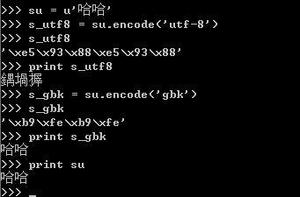有用的20个python代码段(5)

有用的20个python代码段(5):
1、列表清单扁平化
有时你不确定列表的嵌套深度,而且只想全部要素在单个平面列表中。
可以通过以下方式获得:
from iteration_utilities import deepflatten# if you only have one depth nested_list, use this
def flatten(l):
return [item for sublist in l for item in sublist]
l = [[1,2,3],[3]]
print(flatten(l))
# [1, 2, 3, 3]
# if you don't know how deep the list is nested
l = [[1,2,3],[4,[5],[6,7]],[8,[9,[10]]]]
print(list(deepflatten(l, depth=3)))
# [1, 2, 3, 4, 5, 6, 7, 8, 9, 10]
若有正确格式化的数组,Numpy扁平化是更佳选择。
2、列表取样
通过使用random软件库,以下代码从给定的列表中生成了n个随机样本。
import randommy_list = ['a', 'b', 'c', 'd', 'e']
num_samples = 2
samples = random.sample(my_list,num_samples)
print(samples)
# [ 'a', 'e'] this will have any 2 random values
强烈推荐使用secrets软件库生成用于加密的随机样本。
以下代码仅限用于Python 3。
import secrets # imports secure module.secure_random = secrets.SystemRandom() # creates a secure random object.
my_list = ['a','b','c','d','e']
num_samples = 2
samples = secure_random.sample(my_list, num_samples)
print(samples)
# [ 'e', 'd'] this will have any 2 random values
3、数字化
以下代码将一个整数转换为数字列表。
num = 123456# using map
list_of_digits = list(map(int, str(num)))
print(list_of_digits)
# [1, 2, 3, 4, 5, 6]
# using list comprehension
list_of_digits = [int(x) for x in str(num)]
print(list_of_digits)
# [1, 2, 3, 4, 5, 6]
4、检查唯一性
以下函数将检查一个列表中的所有要素是否唯一。
def unique(l):if len(l)==len(set(l)):
print("All elements are unique")
else:
print("List has duplicates")
unique([1,2,3,4])
# All elements are unique
unique([1,1,2,3])
# List has duplicates
更多Python知识,请关注:!!
以上是 有用的20个python代码段(5) 的全部内容, 来源链接: utcz.com/z/529781.html





